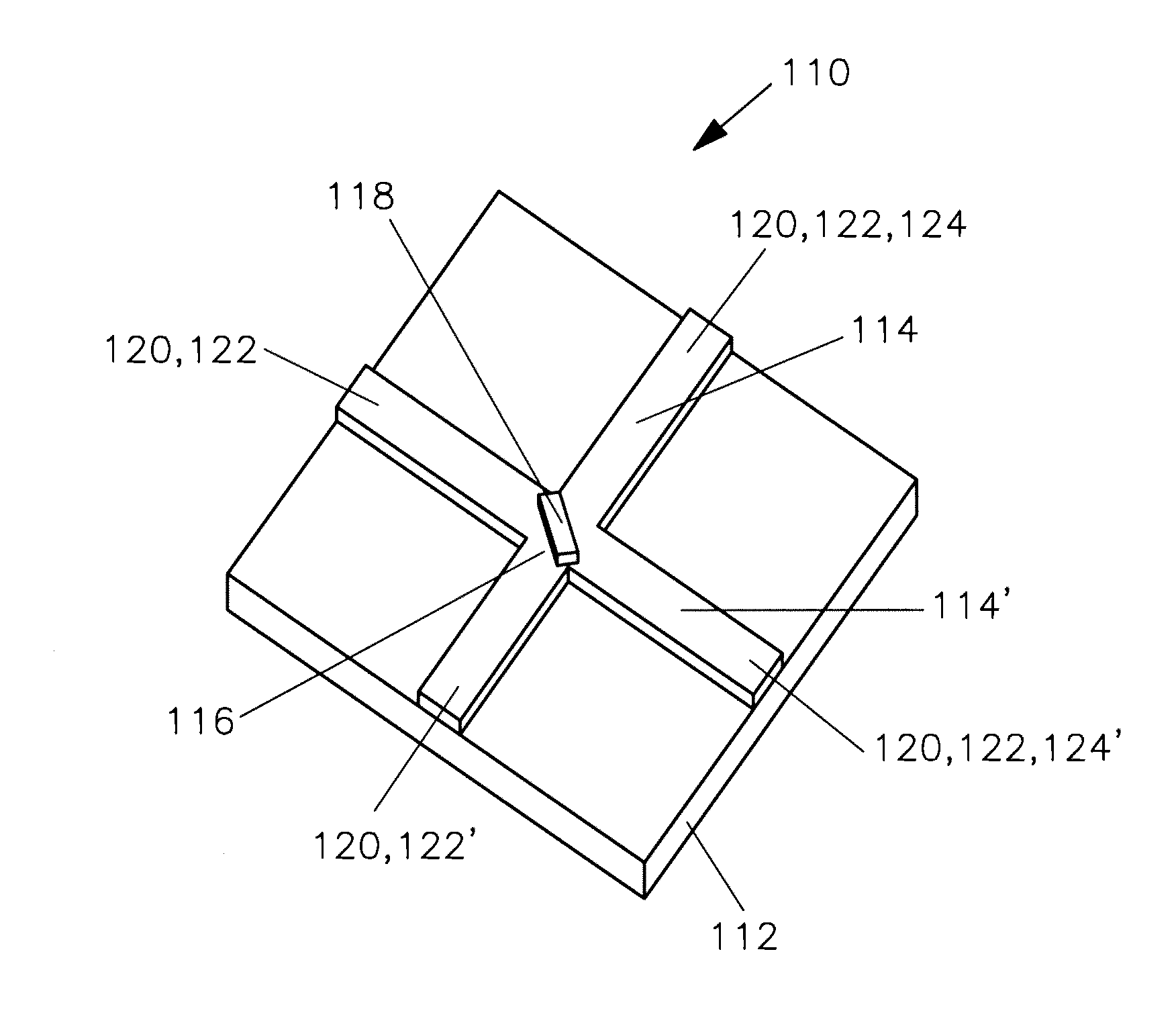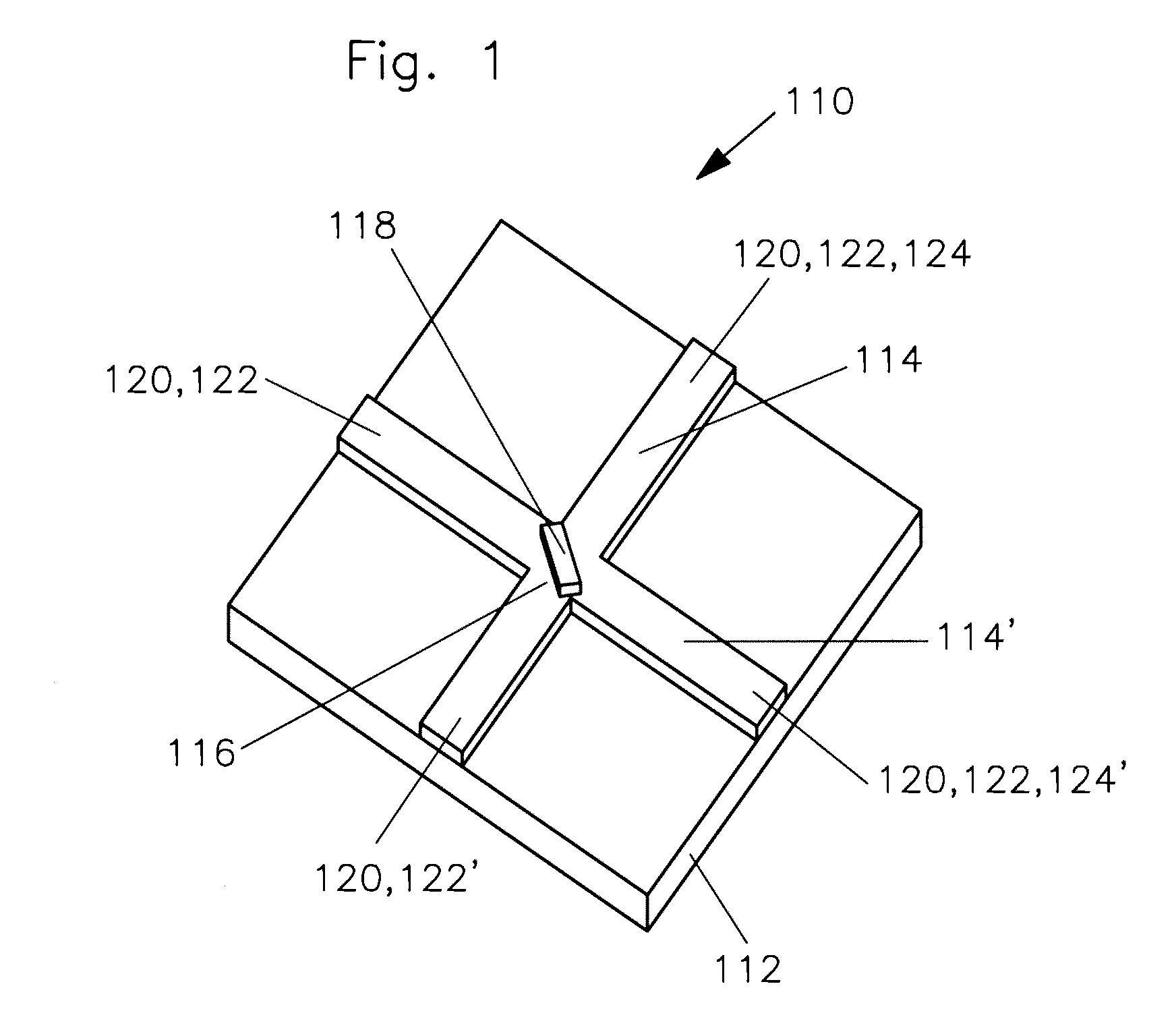Nanophotonic spatial light modulator
a spatial light modulator and photonic technology, applied in the field of nanophotonic devices, can solve the problems of limiting the switching speed of slms equipped with liquid crystals to a frequency range far below current telecommunication data manipulation rates, and current slms based on liquid crystal elements are only capable of covering a limited wavelength range, so as to achieve high pixel density, wide range of effects
- Summary
- Abstract
- Description
- Claims
- Application Information
AI Technical Summary
Benefits of technology
Problems solved by technology
Method used
Image
Examples
Embodiment Construction
[0058]FIG. 1 schematically shows an aerial view of a preferred embodiment of a nanophotonic device 110 according to the present invention. On a transparent substrate 112, two waveguides 114, 114′ are located in a manner that they comprise a common intersection point 116. In this particular embodiment, the two waveguides 114, 114′ are arranged orthogonally with respect to each other, however, other arrangements are feasible where the two waveguides 114, 114′ adopt an angle≠90° with respect to each other.
[0059]According to the present invention, the nanophotonic device 110 further comprises a nanoscale element 118 at the intersection point 116. The nanoscale element 118 is switchable between two different states, wherein the two states differ by a refractive index value. In the examplary nanophotonic device 110 as presented in FIG. 1, this feature is obtained by selecting the nanoscale element 118 to comprise the chalcogenide-based phase-change material (PCM) Ge2Sb2Te5, usually abbrev...
PUM
| Property | Measurement | Unit |
|---|---|---|
| thickness | aaaaa | aaaaa |
| thickness | aaaaa | aaaaa |
| wavelengths | aaaaa | aaaaa |
Abstract
Description
Claims
Application Information
 Login to View More
Login to View More - R&D
- Intellectual Property
- Life Sciences
- Materials
- Tech Scout
- Unparalleled Data Quality
- Higher Quality Content
- 60% Fewer Hallucinations
Browse by: Latest US Patents, China's latest patents, Technical Efficacy Thesaurus, Application Domain, Technology Topic, Popular Technical Reports.
© 2025 PatSnap. All rights reserved.Legal|Privacy policy|Modern Slavery Act Transparency Statement|Sitemap|About US| Contact US: help@patsnap.com



